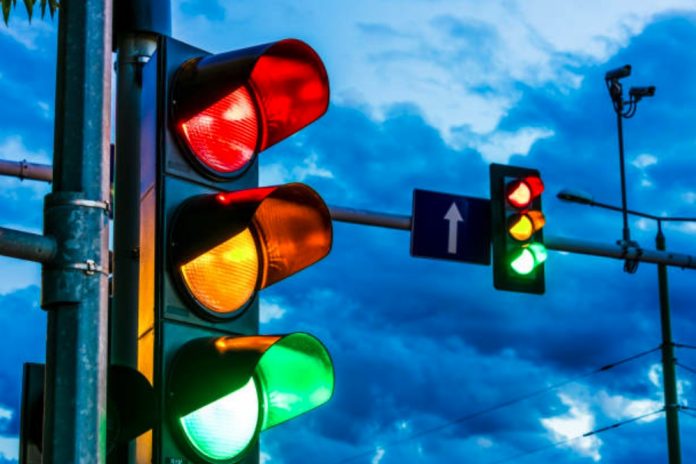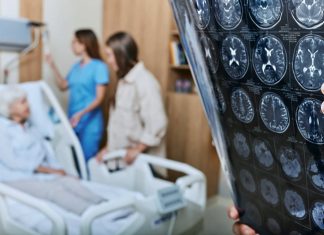กรุงเทพมหานคร ประกาศความสำเร็จของโครงการติดตั้งระบบสัญญาณไฟจราจรอัจฉริยะ (Adaptive Signal Control) หลังพบว่าสามารถลดความล่าช้าในการเดินทางบริเวณทางแยกได้สูงสุดถึง 41% จากการติดตั้งแล้วเสร็จใน 72 จุดสำคัญทั่วกรุง และเตรียมขยายผลการติดตั้งเพิ่มเติมอีก 200 แยกในปีหน้า
ระบบดังกล่าวใช้กล้องตรวจจับปริมาณรถแบบเรียลไทม์และประมวลผลด้วยคอมพิวเตอร์ที่ใช้ปัญญาประดิษฐ์ (AI) เพื่อปรับเปลี่ยนเวลาสัญญาณไฟตามสภาพการจราจรจริง แทนระบบเดิมที่ใช้การตั้งเวลาตายตัวหรือพึ่งเจ้าหน้าที่ตำรวจควบคุมด้วยมือ ซึ่งมักไม่สามารถตอบสนองต่อสภาพจราจรที่เปลี่ยนแปลงตลอดเวลาได้อย่างมีประสิทธิภาพ ผลจากการทดลองใช้งานพบว่า ระบบสามารถช่วยระบายรถในทิศทางที่ติดขัดได้รวดเร็วขึ้น ลดเวลาที่ต้องหยุดรถโดยไม่จำเป็น และช่วยเพิ่มความต่อเนื่องของการเคลื่อนตัวบนถนน ช่วยประหยัดเวลา ลดการสิ้นเปลืองเชื้อเพลิง และลดมลพิษทางอากาศ โดยเฉพาะในช่วงที่ไม่ใช่ชั่วโมงเร่งด่วน มีการปรับปรุงสภาพจราจรโดยรวมเฉลี่ยถึง 15% และยังอยู่ระหว่างเก็บข้อมูลเพื่อประเมินผลเพิ่มเติมในช่วงเร่งด่วน

ระบบใหม่นี้ตั้งแต่เดือนมีนาคม 2568 ครอบคลุมแยกสำคัญในเขตพื้นที่ชั้นใน เช่น ถนนสุขุมวิท สาทร สีลม พระราม 4 พหลโยธิน และเพลินจิต ซึ่งเป็นจุดที่มีปัญหาการจราจรหนาแน่นมาอย่างต่อเนื่อง ทั้งนี้ กทม. เตรียมขยายผลการติดตั้งเพิ่มเติมอีก 200 แยกในปี 2569 เพื่อครอบคลุมพื้นที่การจราจรหลักให้ทั่วถึงมากยิ่งขึ้น ผู้ว่าฯ ชัชชาติ สิทธิพันธุ์ เน้นย้ำว่า เทคโนโลยีที่ล้ำสมัยเพียงใดก็ไม่อาจแก้ปัญหาได้เต็มประสิทธิภาพ หากประชาชนขาดวินัยในการขับขี่ ไม่เคารพกฎจราจร หรือฝ่าฝืนสัญญาณไฟ ดังนั้น การมีระเบียบวินัยร่วมกันจึงเป็นเงื่อนไขสำคัญในการเปลี่ยนโฉมระบบจราจรของกรุงเทพฯ ให้ดีขึ้นในระยะยาว
Bangkok has announced the success of its Adaptive Signal Control project, reporting that the system has reduced traffic delays at intersections by up to 41% following its installation at 72 key intersections across the city. The Bangkok Metropolitan Administration (BMA) plans to expand the system to another 200 intersections next year.
This smart traffic light system uses real-time traffic detection cameras and AI-powered computers to analyze traffic flow and adjust signal timings accordingly. It replaces the outdated fixed-time signal system and manual control by police officers, which often failed to adapt effectively to fluctuating traffic conditions.
Trial results have shown that the new system significantly improves traffic flow, especially in congested directions, reduces unnecessary stops, enhances road continuity, saves travel time, lowers fuel consumption, and cuts down on air pollution. During non-peak hours, overall traffic efficiency improved by an average of 15%, with further evaluations underway for peak periods.
Since its launch in March 2025, the system has been deployed in major inner-city roads such as Sukhumvit, Sathorn, Silom, Rama IV, Phahonyothin, and Ploenchit—areas long plagued by chronic congestion. With plans to expand to 200 more intersections in 2026, the BMA aims to cover as many critical traffic zones as possible.
However, Bangkok Governor Chadchart Sittipunt stressed that no matter how advanced the technology is, it cannot fully solve traffic problems without public cooperation. He emphasized that discipline, respect for traffic rules, and compliance with traffic signals are essential. The combination of smart technology and responsible driver behavior, he said, will be the key to transforming Bangkok’s traffic for the better.
#smarttrafficlights #bangkoktraffic #smartcity #updatenews #TheThailandder
ที่มา : www.posttoday.com

















